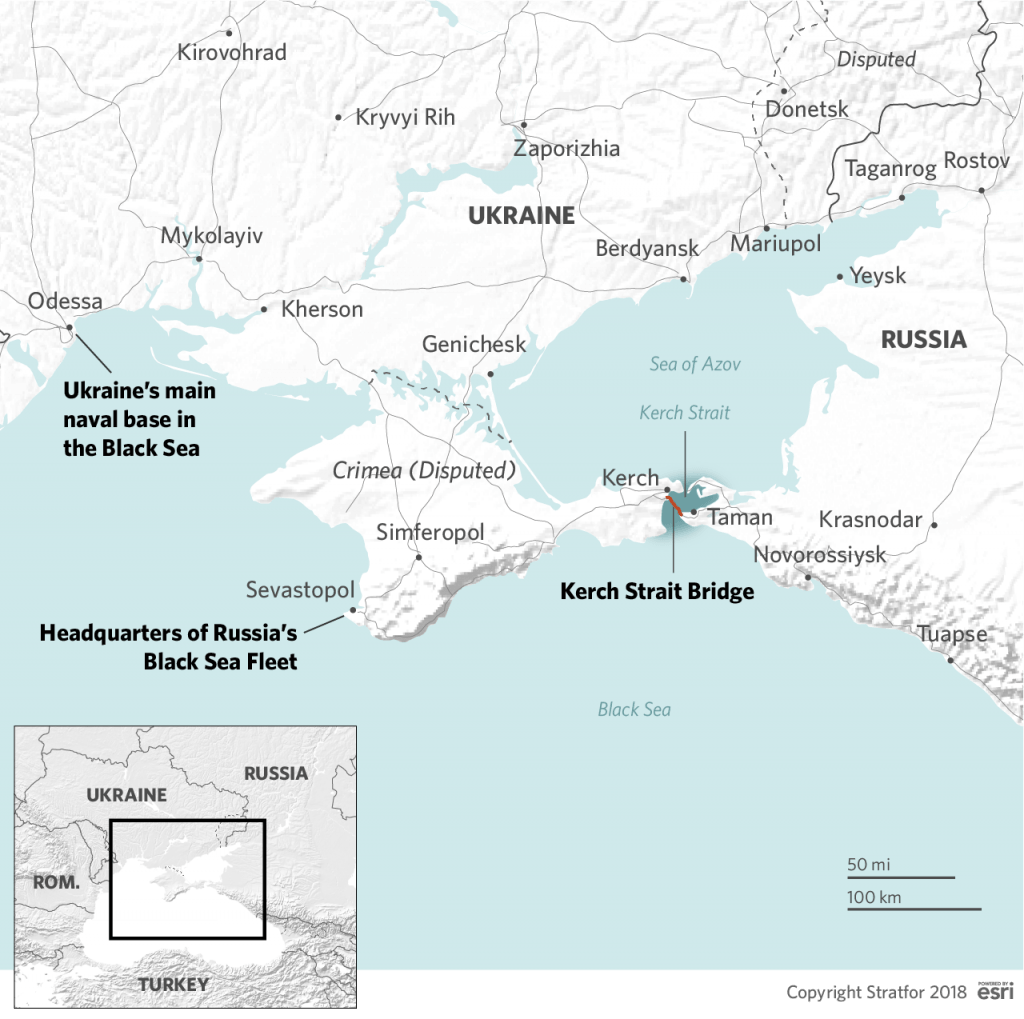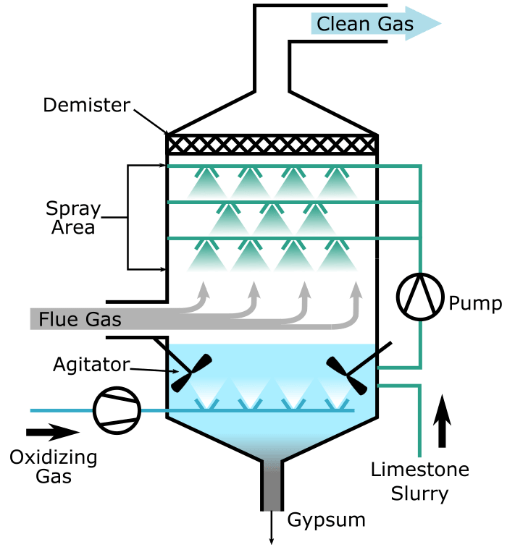Kheer Bhawani Festival
Syllabus: GS1/Culture
Context
- The Kheer Bhawani festival, an annual celebration held on Jyeshta Ashtami, is currently taking place at the Kheer Bhawani temple in Ganderbal, Jammu and Kashmir.
About Kheer Bhawani Temple
- The original temple was built by Maharaja Pratap Singh around 1912. It was later embellished and renovated by Maharaja Hari Singh.
- It is dedicated to Goddess Ragnya Devi, who is considered an incarnation of Goddess Durga.
- A distinctive feature of the temple is a hexagonal spring located at its center, revered for its sacred water.
- Both the temple and the festival derive their name from the sweet dish ‘kheer’, which is distributed as prasad (a religious offering) to devotees.
Source: ET
Kerch Strait
Syllabus: GS1/ Geography, Locations
In News
- Ukraine says it hit Kerch Strait Bridge also known as the Crimean Bridge with underwater explosives.
- Opened in 2018, the Kerch Bridge is a road and rail bridge that connects the Russian mainland with Crimea, crossing over the Kerch Strait.
About Kerch Strait
- Location: The Kerch Strait is a narrow waterway that connects the Sea of Azov to the Black Sea.
- Geography: It is approximately 4 kilometers wide at its narrowest point and serves as a crucial shipping lane.
- Control and Access: Since Russia annexed Crimea in 2014, it has gained control over the entire Kerch Strait area, including the waters and surrounding infrastructure, including the Kerch Bridge.

Source: LM
Motion of Impeachment Against High Court Judge
Syllabus :GS 2/Governance
In News
- The government will move an impeachment motion against Justice Yashwant Varma of the Allahabad High Court in the upcoming Monsoon Session.
- The move follows a committee report indicting him after unaccounted cash was found at his residence following a fire.
Constitutional Provisions
- Articles 124 and 217 of the Constitution allow the President to remove Supreme Court or High Court judges for ‘proved misbehaviour’ or ‘incapacity’ after both Houses of Parliament pass a motion with a special majority.
- While these terms aren’t defined in the Constitution, the Supreme Court interprets misbehaviour as misconduct like corruption or moral wrongdoing, and incapacity as a physical or mental medical condition.
Process
- The Judges (Inquiry) Act, 1968 outlines the removal process for judges.
- A removal motion must be signed by at least 50 Rajya Sabha or 100 Lok Sabha members.
- The Speaker or Chairman may admit or reject it. If admitted, a three-member committee investigates.
- If the judge is cleared, the motion is dropped
- If found guilty, both Houses must pass the motion with a special majority (Two-thirds of members present and voting, and majority of total membership) for the removal.
- Once both Houses pass the motion, it is sent to the President, who gives the final order for removal.
Key Fact
- No judge has been impeached till date, though motions have been initiated earlier (e.g. Justice V. Ramaswami in 1993).
Source: TH
C CARES Version 2.0
Syllabus :GS2/Governance
In News
- The Ministry of Coal announced the launch of a new version of web portal (C CARES Version 2.0) to streamline the provident fund (PF) and pension disbursement.
C CARES Version 2.0 portal
- It streamlines PF/Pension disbursement for coal workers by unifying workers, management, and Coal Mines Provident Fund Organisation (CMPFO) on a single digital platform.
- It allows claims to be tracked in real-time, thus reducing settlement time to fulfil the objective of providing social security to the workers.
- It is developed and designed by the Centre for Development of Advanced Computing (C-DAC).
Benefits
- It enhances transparency, accountability, and efficiency by enabling real-time claim tracking and faster settlements, ensuring better social security for coal sector workers.
- It is a step towards Prime Minister Narendra Modi’s vision of ‘Minimum Government, Maximum Governance’ through digital India.
| Coal Mines Provident Fund Organisation (CMPFO) – It is an autonomous organization under the aegis of the Ministry of Coal. – It was established in 1948 for administering Provident Fund and Pension schemes for the purpose of providing social security to the coal sector workers. – It is presently rendering services to about 3.3 lakh Provident Fund subscribers and 6.3 lakh pensioners of coal sector. |
Source :TH
ECOWAS
Syllabus: GS2/IR
Context
- According to a recent study, 54% of Togolese citizens believe their country would benefit from exiting the Economic Community of West African States (ECOWAS) to join the Alliance of Sahel States (AES).
About: ECOWAS
- Also known as CEDEAO in French and Portuguese, it is headquartered in Abuja, Nigeria.
- It was established in 1975 through the Lagos Treaty to promote economic integration among its members. ECOWAS has also worked to address some security issues by developing a peacekeeping force for conflicts in the region.
- It initially had 15 members: Benin, Burkina Faso, Cabo Verde, Cote d’Ivoire, The Gambia, Ghana, Guinea, Guinea-Bissau, Liberia, Mali, Niger, Nigeria, Senegal, Sierra Leone, and Togo. However, in January 2025, the military-led governments of Mali, Niger, and Burkina Faso formally withdrew from ECOWAS, reducing the bloc to 12 members.
Do you know?
- On 16 September 2023, the three West African junta-led countries of Burkina Faso, Mali, and Niger declared the creation of the Alliance of Sahel States, or L’Alliance des États du Sahel (AES).
Source: DTE
Shangri-La Dialogue 2025
Syllabus: GS2/IR
Context
- Chief of Defence Staff (CDS) General Anil Chauhan attended the 22nd Shangri-La Dialogue (2025) to enhance defence diplomacy and engage with global military leadership.
About the Dialogue
- Hosted annually by the International Institute for Strategic Studies (IISS).
- Named after the Shangri-La Hotel in Singapore, where it has been held since its inception in 2002.
- It is Asia’s premier defence and security summit that brings together defence ministers, military chiefs, policy makers and strategic experts across the globe.
- The 22nd edition witnessed participation from 40 nations, focusing on emerging security challenges in the Indo-Pacific region.
Source: PIB
ICRISAT Launches Agri Cooperation Centre for Global South
Syllabus: GS3/ Agriculture
Context
- The International Crops Research Institute for the Semi-Arid Tropics (ICRISAT), in collaboration with Research and Information System for Developing Countries (RIS), launched the ICRISAT Centre of Excellence for South-South Cooperation in Agriculture (ISSCA).
- The new Centre is based in Hyderabad.
About
- Objective: To catalyze South-South Cooperation (SSC) by translating proven agricultural innovations into scalable, impactful solutions.
- Focus Areas:
- Deployment of low-cost, high-impact technologies.
- Promotion of policy models and capacity-building tools tailored to dryland and developing regions.
- Peer-to-peer learning and knowledge exchange among countries of the Global South.
- It features a digital portal that functions as a living repository of validated innovations.
Source: PIB
MSC Irina at Vizhinjam International Seaport
Syllabus :GS3/Economy
In News
- MSC Irina (biggest container vessel in the world) first time reached the Vizhinjam International Seaport.
Vizhinjam International Seaport
- It is developed by the Kerala government under a Public-Private Partnership (PPP) model.
- It is a deepwater transhipment port for container and multipurpose cargo.
- It is India’s first transshipment port capable of handling ultra-large container ships.
- It is located near Sri Lanka’s Colombo Port, which currently handles 70% of India-bound transshipment cargo.
- It aims to reduce India’s dependence on foreign ports like Colombo.
- Its natural 24-meter depth allows it to berth the world’s largest ships without extensive dredging.
Source :TH
Flu Gas Desulphurisation (FGD)
Syllabus: GS3/ Environment
In News
- A high-powered committee of experts has recommended doing away with a decade-long policy of mandating equipment, called Flu Gas Desulphurisation (FGD) units, in all coal-fired thermal power plants (TPP).
Committee’s Findings
- SO2 levels in ambient air across the country are around 10-20 micrograms/cubic metre, well below India’s air quality norms of 80;
- Stack heights and climatic conditions in India naturally disperse SO₂ emissions, limiting local air quality threats.
- Indian coal is low in sulphur; SO2 levels in cities near plants with operational FGD units do not differ significantly from those without these units.
About Flu Gas Desulphurisation (FGD)

- Definition: Flue Gas Desulphurisation is a set of technologies used to remove sulphur dioxide (SO₂) from the exhaust flue gases of fossil-fuel power plants—especially coal-based thermal power stations.
- Introduction: FGD are mandated by the Ministry of Environment, Forest and Climate Change (MoEFCC) via a notification in 2015.
- Required all thermal power plants to install FGD units by 2018, though deadlines have been extended to 2027–2029, in a phased manner based on location and capacity.
- Working: Flue gases are passed through a scrubber where they contact a slurry of limestone (CaCO₃). SO₂ reacts with CaCO₃ to form calcium sulphite, which is then oxidized to calcium sulphate dihydrate (gypsum).
- Electrostatic precipitators (ESPs) and Selective Catalytic Reduction (SCR) units are used to remove fly ash and NOx, respectively, before FGD treatment.
- Challenges: High capital cost, Water intensive
Source: TH
SHUKR Gene
Syllabus: GS3/ S&T
In News
- The study, recently published in Nature Plants, described the role of a newfound gene called SHUKR (meaning ‘sperm’ in many Indian languages) in the plant Arabidopsis thaliana.
About
- This gene is expressed in the flower’s sporophyte cells and affects the development of pollen. When a functional SHUKR gene is absent, the flower fails to produce viable pollen.
- The SHUKR gene was also found to regulate a class of genes called F-box genes in pollen. These genes remove proteins that have served their functions and make room for new proteins to act in pollen development.
Source: TH
Previous article
Building-Integrated Photovoltaics (BIPV)